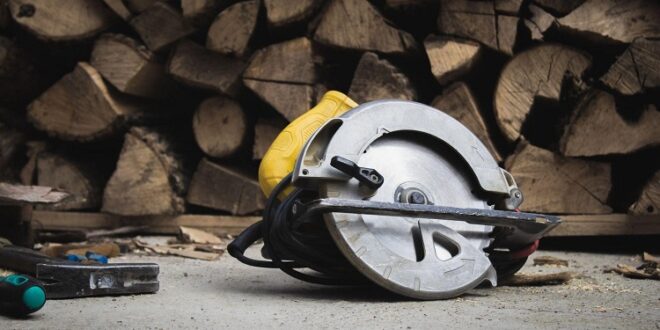The circular saw is arguably one of the most common and much-appreciated tools among avid DIYers and professionals alike. Generally designed for making straight cuts in lumber and similar material, it can be a highly versatile instrument provided that you know how and when to use it. Here’s a brief guide to help you make the best of your circular saw without risking your safety.
The Many Uses of Circular Saws
If you live in the country, you might want to use your circular saw for cutting logs. This is the preferred tool of commercial firewood makers that you can also apply in similar situations without fearing the wear this could entail — a regular circular saw won’t be affected much by such operation.
In situations where precision is not the highest priority and what you need is an easy bevel cut, a circular saw will very likely prove the right tool. Apart from that, this kind of saws is commonly used for making cross-cuts, usually when working with longer stock.
Why Use Guide Rails
We’ve mentioned that accuracy might not be among circular saws’ biggest advantages. It turns out, though, that you can bring it to a whole new level with a circular saw guide rail. This is a support system for your stock and saw that helps you make cleaner, more accurate cuts. A typical scenario that calls for a guide rail is cutting at an angle between 45 and 90 degrees. The tool typically comes with splinter protection, thus potentially solving another common problem.
Before investing in a guide rail, make sure the saw you are using can actually be paired with one. Consider factors such as the rail’s length, because longer instruments can be harder to maneuver but also give you more freedom in terms of stock size and material. Overall quality is key because that’s the only parameter that inevitably correlates with accuracy.
Take It Easy
The key to success with a circular saw is not to go too deep. When you have inserted the blade, it should protrude from the underside of the stock by no more than a quarter of an inch, ideally even less. Deeper cuts tend to be both messy and dangerous to perform.
Know Your Saw
It seems like all circular saws come with somewhat different notches and marks. Knowing yours inside out is the key to success if clean cuts are your goal. These days, laser guides can make things much easier for a DIYer, but cutting your stock into flawless shape is possible even with the simple 90 and 45 degree marks.
Use Additional Tools
Straightforward as it may seem, a circular saw might require very simple devices to support its operation. These include a sheet of insulation to put over your workbench, an extra layer to prevent the surface from getting cut and provide extra grip.
Another useful tool is an offset block, a simple square or rectangle of wood used to mark the required offset of the blade for longer cuts. By introducing your practice, you’ll avoid calculating the blade position from scratch or wasting time on guesswork.
Staying Safe: Common Sense
Safety is boring, but we miss it so much when it’s not there. Here are some common-sense tips for using a circular saw in any setting:
- Secure everything that’s loose on you, from hair to clothes to jewelry.
- Wear eye and hearing protection.
- Choose the right blade for the material you are cutting according to its specifications.
- Use clamps to free your hands.
Now that you know how to use a circular saw, it’s probably time to get your hands dirty. Enjoy it.
 HammBurg Be informed with latest news, reviews, entertainment, lifestyle tips, and much more.
HammBurg Be informed with latest news, reviews, entertainment, lifestyle tips, and much more.



